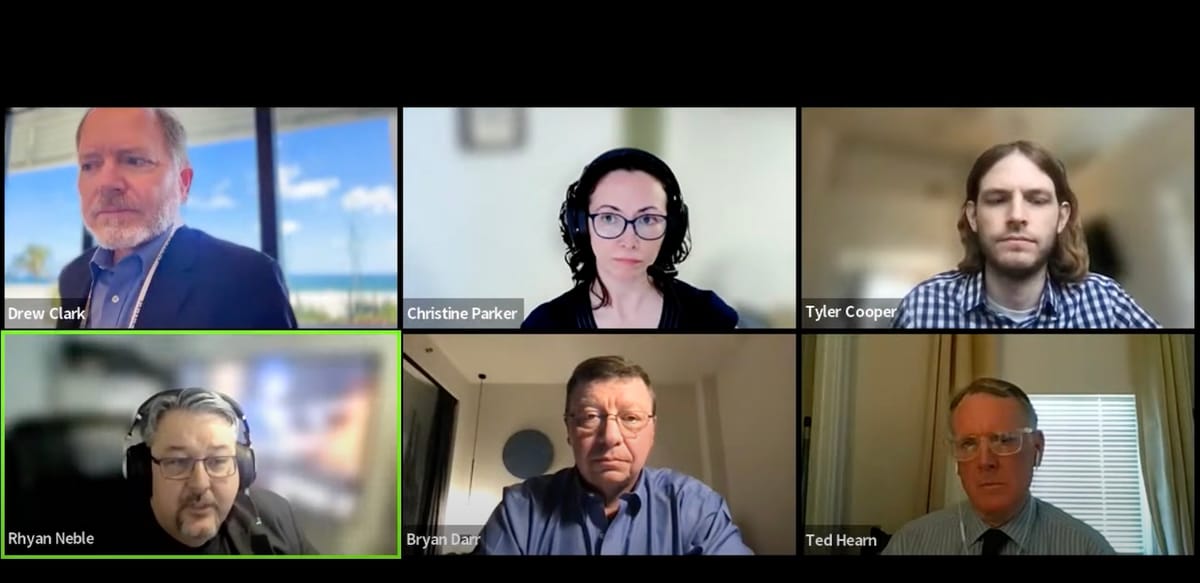Mapping and Data Experts Discuss Impact of New FCC Broadband Labels
The experts held split opinions regarding the impact of new consumer broadband labels mandated by the Federal Communications Commission.
Jericho Casper, Corey Walker

WASHINGTON, March 5, 2024 – The multitude of consumer broadband labels that internet service providers must create by April 10 to adhere to new federal data transparency regulations has caught many ISPs off-guard, broadband mapping and data experts said at a Broadband Breakfast Live Online event on Wednesday.
The experts held split opinions regarding the impact of consumer broadband labels mandated by the Federal Communications Commission. These labels are designed to help consumers easily identify information regarding the price, speed, latency, and privacy of available internet service plan options.
 Broadband BreakfastBroadband Breakfast
Broadband BreakfastBroadband Breakfast
Some individuals questioned the labels' comprehensiveness, while others raised concerns about potential confusion they might introduce. Additionally, many raised doubts about ISPs' preparedness to create these consumer labels.
The virtual discussion among multiple moderators for Broadband Breakfast’s Broadband Measurement Summit is set to continue at the event taking place this Thursday, March 7 at Clyde's of Gallery Place in Washington.
Rhyan Neble, the vice president of product innovation at ETI Software Solution, emphasized that a significant number of broadband consumer labels will be required to account for the many variations between service plans and pricing throughout geographic areas.
Ensuring variations in pricing and speed are consistent with the label presented to consumers at the point of sale has been the primary challenge ISPs are grappling with, Neble said.
Neble illustrated how residences on the same street frequently face three or more variations in internet service pricing. These discrepancies are influenced by factors including diverse funding sources across network segments or the imposition of specific franchising fees on certain homes, while others remain unaffected.
New requirements may have sweeping results
In addition to creating labels to encompass all variations in prices and service plans, ISPs must also ensure that the broadband speeds reported on these labels reflect data from the preceding six months.
“Even if nothing else changes, these labels are going to have to be modified every six months,” Bryan Darr, vice president of smart cities at Ookla, emphasized.

The panel reached a consensus that the FCC’s data transparency collection initiatives need refinement to acquire more relevant data essential for providing high-speed internet access to all residents.
Neble specifically criticized the FCC’s data transparency order, deeming it "highly problematic" for suggesting that ISPs collect pricing information at the zip code level. He argued that this approach fails to accurately capture the variations in pricing, speed, and latency from house to house, and street to street.
Moderators for Broadband Measurement Summit preview questions
Christine Parker, a senior GIS analyst at the Institute for Local Self-Reliance, emphasized the significance of measuring latency, as well as the reliability and performance of these networks.
Additionally, Parker stressed collecting demographic data and documenting existing infrastructure, including pole infrastructure, saying all of this data will be “incredibly valuable” in preparation for federal broadband funding.
Addressing how the public will receive new broadband labels, Tyler Cooper, editor-in-chief of BroadbandNow, expressed “I know consumers who would love a tool like this to cut through the noise and understand what they’re getting at a high level.”
"We hear firsthand from people every day how difficult it can be to compare [pricing data] without a tool like ours,” Cooper said of BroadbandNow, a platform that allows users to compare various ISPs based on factors such as pricing, speed, and customer reviews.
However, Darr raised doubts about the level of attention the public will devote to these efforts.
Meanwhile, Ted Hearn, editor and publisher of Policyband, argued that within the context of today's information overload, ISPs may see these labels as another bureaucratic task from Washington D.C., likely to be met by consumers with little interest.
Tier 1 providers versus smaller ISPs
Neble observed through interactions with larger organizations, Tier I providers often view FCC measurement efforts as overly intrusive. Conversely, Neble said, smaller Tier 2 and Tier 3 operators have expressed enthusiasm about the prospect of leveling the competitive landscape.
They recognize that many of their Tier 1 competitors tend to under-provision services in the market, while Tier 2 and 3 fiber operators frequently over-provision to guarantee quality of service and to ensure their subscribers genuinely receive advertised speeds.
Providers with 100,000 or fewer subscriber lines have an extended deadline of October 10 to create the consumer broadband labels.
Regarding potential enforcement measures by the FCC against providers who inflate metrics on labels, Hearn asserted that there will “inevitably” be enforcement issues concerning advertised prices and actual speeds.
Hearn asserted that often ISPs advertised speeds are to-the-router, and not to-the-user. Meaning the advertised speeds don’t take into account the “Wi-Fi spray” in a user’s house or apartment which can significantly lower the broadband speeds experienced by a user.
The FCC rules adopted in the broadband label order respond to the direction in the Infrastructure Investment and Jobs Act for the FCC to require providers to create consumer-friendly labels with information about their broadband services. The FCC hopes that the new labeling initiative will help consumers compare service plans and make more informed choices.
Under IIJA, the commission is also required to collect ACP pricing data from participating ISPs, with a requirement to confirm the accuracy of this data within 180 days of receipt and subsequently make it publicly available.
Discussions focusing on the importance of mapping and data collection initiatives in achieving universal internet access will continue at the Broadband Measurement Summit on March 7.
 Broadband BreakfastBryan Darr
Broadband BreakfastBryan Darr









